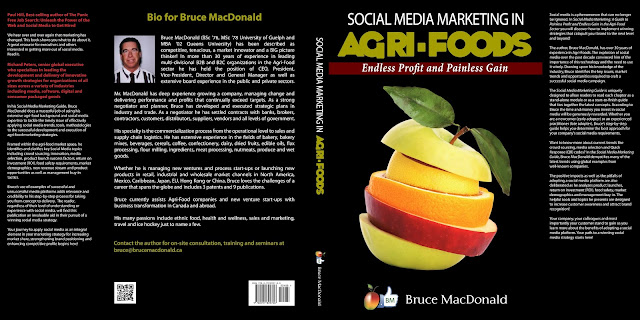Infant formula exports booming
JUDITH GALTRY
OPINION: Infant formula is New Zealand's export superstar. However, does this trade undermine best health and nutrition practice globally and, if so, what can be done about it?
Ministry of Economic Development figures show that in 2009 formula exports were worth $753 million to the New Zealand economy, up from $63 million in 1999. Business commentators suggest formula export income may now be around $1 billion.
As one of the world's leading milk powder producers and exporters, New Zealand is benefiting from the expansion in large, emerging offshore infant formula markets, particularly in East Asia.
After the US, China is currently the largest infant formula market in the world - worth US$6 billion (NZ$7.43 billion) in 2011 - and is projected to double by 2016.
The phase-out of infant formula tariffs agreed to under the 2008 New Zealand-China Free Trade Agreement has helped New Zealand's infant formula export boom. New Zealand is currently the second largest offshore infant formula provider for the Chinese market (18 per cent share), after Singapore (37 per cent), and ahead of Australia (15 per cent).
Multimillion dollar processing plants (some part or wholly Chinese-owned) are springing up in New Zealand to manufacture formula for China's rapidly expanding market, where a can of formula (costing around $20 in New Zealand) can sell for over NZ$70 a can. Recent moves by New Zealand dairy exporters toward exporting "added value", pre-constituted formula (rather than raw milk powder) has led to these high price margins, with some calling it the new gold rush.
In New Zealand, the trend of buying large quantities of formula from supermarkets for illegal export to China has led to purchase restrictions in many retail outlets. In China, unethical marketing practices, including industry representatives approaching new mothers in hospitals with formula samples, exploit opportunities created by urbanisation, growth of the middle classes, increased maternal employment, higher disposable incomes and the one- child policy.
Middle-class Chinese parents, with just one child to invest in, are willing to pay premium prices for formula from safe suppliers. On top of that, following China's 2008 melamine infant feeding scandal, infant food safety fears have led to demand for products from perceived "high quality" sources such as New Zealand.
While the detrimental environmental effects of dairy industry expansion have been debated recently in New Zealand, the potential health effects of the infant formula trade have been largely overlooked.
In 2012, Unicef expressed concern about sharply declining breastfeeding rates, including exclusive breastfeeding of babies under six months, in East Asia, and about companies' marketing and lobbying tactics. The same year, Wikileaks exposed efforts by United States corporations to persuade Asian leaders to stop breastfeeding promotion. A 2013 report by Save the Children shows a fall in China's breastfeeding rates, including exclusive breastfeeding of infants under six months.
Not breastfeeding exclusively increases the risk of infant morbidity and mortality. This risk is greatly increased where there is poor water quality and sanitation and where parents are illiterate and unable to read formula preparation instructions.
Media reports have recently highlighted serious water pollution issues in China, while in 2012 Unicef reported good sanitation facilities were available to only 58 per cent and 52 per cent of China's urban and rural populations respectively.
Part of the global framework for protecting breastfeeding and babies fed on formula is the restrictions placed on infant formula marketing in the World Health Organisation's International Code of Marketing of Breastmilk Substitutes, 1981 (WHO Code). In China, several WHO Code principles are enacted in law, but there is reportedly little enforcement and few penalties for breaches, including for promoting formula for newborns and babies. A Save the Children survey in China found 40 per cent of mothers who were interviewed reported being contacted directly by formula companies. Most were recommended products or offered free samples.
New Zealand signed the WHO Code in 1983 and implements it under three voluntary and self- regulatory codes, along with the Australia New Zealand Food Standards Code. New Zealand's voluntary industry agreement applies to infant formula manufacture and importing within New Zealand, including restricting formula marketing for infants under six months. In Australia, industry-agreed marketing controls are stronger, applying to infants under 12 months.
Currently, industry standards for infant formula manufacture and marketing within New Zealand are stronger than those governing our exports. Export standards (under consideration) include some exemptions on formula composition and a blanket exemption for labelling, requiring only that these meet importing countries' requirements. Some New Zealand exporters targeting East Asian markets are promoting formula for babies.
There are now calls from within our dairy sector for "alignment" of New Zealand's infant formula standards. But given less consideration are the ethical and public health implications for New Zealand as a major infant formula producer and exporter. Despite debates about the adequacy of national efforts, we try to promote and support breastfeeding among our own population. By contrast, we are potentially undermining breastfeeding practice in China and other countries where we know breastfeeding protection is weaker.
So what could New Zealand do? While various international health and trade agreements for marketing infant formula exist, they depend on implementation and enforcement in individual countries. New Zealand and Australia, countries that are influential in China's babyfood market, could take a moral leadership role by requiring all their exporters to comply with the WHO Code or, at least, their own domestic industry agreements, so that standards for infant formula marketing both within and beyond Australasia are consistent.
As in industrialised countries, balancing good child health outcomes (including breastfeeding), maternal employment and gender equity will be complex in China. While New Zealand could show leadership in terms of the marketing of infant formula exports, much of the solution lies with China. This requires good maternity leave systems and WHO Code enforcement, along with other factors including implementation of WHO and Unicef's Baby Friendly Hospital Initiative.
The world media have already highlighted the environmental costs of dairying in New Zealand. This could be compounded by potential charges of unethical infant formula marketing. In the same way the industry is making some effort to solve its environmental issues, the export superstar could support "best practice" child health policy globally and not undermine it.
Dr Judith Galtry is an adjunct fellow at the Australian Centre for Economic Research on Health, Australian National University.





.jpg)
